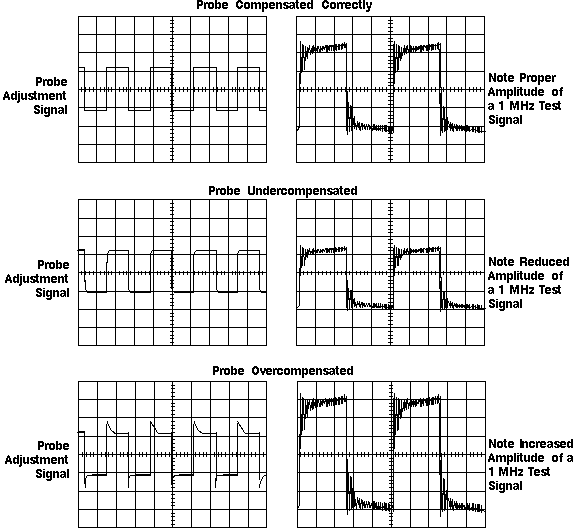|
Compensating the Probe Before using a passive probe, you need to compensate it - to balance its electrical properties to a particular oscilloscope. You should get into the habit of compensating the probe every time you set up your oscilloscope. A poorly adjusted probe can make your measurements less accurate. Following Figure shows what happens to measured waveforms when using a probe not properly compensated.

The Effects of Improper Probe Compensation
Most oscilloscopes have a square wave reference signal available at a terminal on the front panel used to compensate the probe. You compensate a probe by:
- Attaching the probe to an input connector
- Connecting the probe tip to the probe compensation signal
- Attaching the ground clip of the probe to ground
- Viewing the square wave reference signal
- Making the proper adjustments on the probe so that the corners of the square wave are square
When you compensate the probe, always attach any accessory tips you will use and connect the probe to the vertical channel you plan to use. This way the oscilloscope has the same electrical properties as it does when you take measurements. |